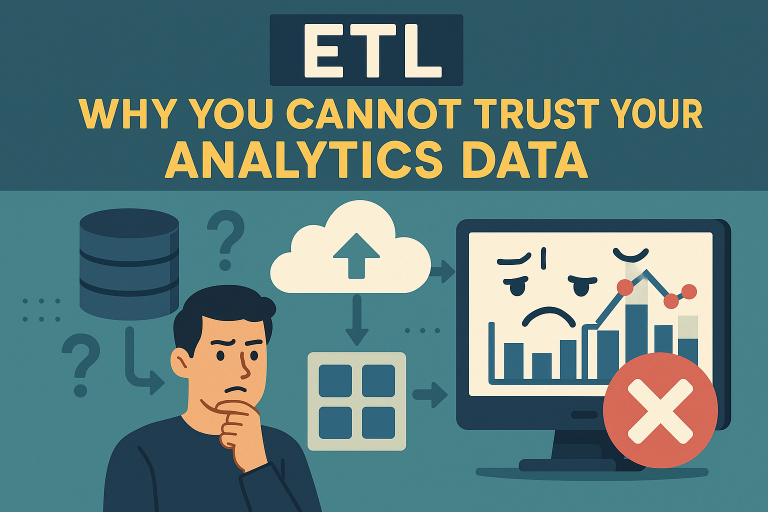The data compatibility blog,
Join the discussion
ETL: Why You Cannot Trust Your Analytics Data
0 May 29, 2025

Data Transformations Cause Analytics Data Trust Issues
Most data used for analytics has been transformed and integrated from multiple source datasets. This process of data transformation leads to inaccuracies in your analytics data. When transforming a source dataset into a target dataset, you are sure that they are not equivalent. Worse yet, is the fact that both datasets are isolated silos and cannot be joined to compare and audit the results. You should not trust data that you can not directly validate. The following list provides several reasons not to trust your analytics data:
- Fragmented Data: Data from multiple disparate sources lacks shared data integrity. Therefore, the source datasets are isolated and disparate.
- Poor Data Quality: Since data integrity is not enforced between datasets, each dataset contains a conflicting version of the data and metadata.
- Incomplete Data: When source datasets are ingested for data integration, they are typically ingested in part to simplify transformations and reduce workload. Incomplete dataset ingestions lead to skewed results and misinformed decisions.
- Biases: Disparate source datasets already lack data integrity between them. When these siloed datasets are first transformed and then integrated, the resulting dataset is filled with biases. These biases can lead to misleading conclusions and affect the trustworthiness of the analytics.
Providing identical source datasets to ten different data teams will result in ten different integrated datasets. Beyond this, there is no way to audit or validate the data transformation, as the sources and the results are mathematically incongruent. When users familiar with the original data observe discrepancies in the integrated dataset, they lose confidence in its reliability.
Why You Can Trust Directly Interoperable Data
With data integration methods, the metadata and data content of source datasets are transformed which unintensionally corrupts the dataset. With directly interoperable datasets, the source datasets are copied without altering the metadata and data content of source datasets. Each source dataset copy is enhanced with Data Compatibility Standards, which incorporate standardized dataset functionality into each dataset. As a result, the enriched datasets are universally interoperable and characterized as analytics-ready modular plug-and-play datasets. These modular datasets spontaneously form a distributed data fabric with end-to-end data integrity enforcement. Therefore, all the modular datasets are related and their data content can be validated and audited. The entire fabric conformes to the FAIR data principles and is composed of trustworthy data. This distributed data fabric becomes the universally interoperable data foundation upon which advanced data fabric components can be formed.
